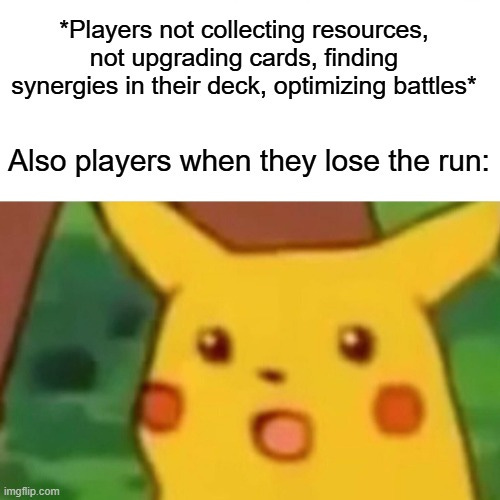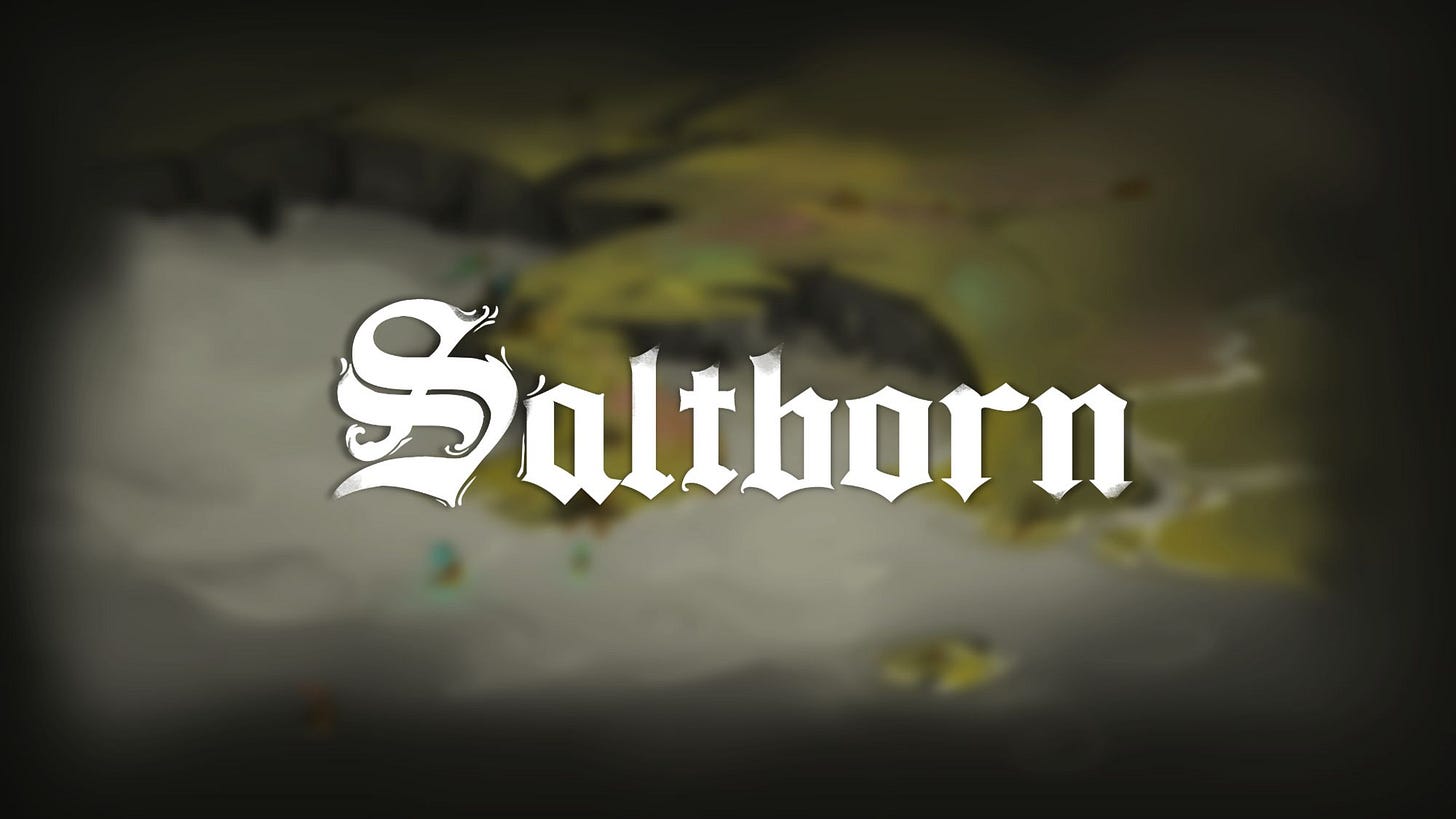The Road From Reveal To Selling 100k Units
What happened in the year since we've revealed our first project? A lot.
Hello and welcome back to this now infrequent newsletter, where I promise to write about things, and then it never happens because I’m already overloaded by work. This post is a follow-up to the previous one, “How I Started An Indie Studio,” where I recounted our journey up to the announcement of Drop Duchy. So, what have we been up to since last year, and why did it take so long to actually release the game? Was the game successful?? Let’s find out now!
Changing Plans (Summer 2024)
The life of the indie developer (or any entrepreneur) is all about crafting perfect plans that give you a clear vision of where you need to go and how to get there… then having external circumstances crush it into a thousand pieces before you have time to execute.
When we announced Drop Duchy in July 2024, it was nearing completion. We had delivered everything we’d agreed on with the publisher, and we were putting the finishing touches (most notably, debugging and balancing). The closing phase of a project is crucial, and in my opinion, the most challenging to navigate. Often, a dev team rushes to finish as much as possible, either because they’re late or because they want to improve the experience until the last minute. It wasn’t our case; we were pretty happy with what we had delivered, and our minds were focused on the big question: what do we do next?
Once you’ve started your indie studio, finding money becomes an obsession, not by greed, but by necessity. Having found a publisher for a first project is very cool, but publishers aren’t charities; they need to recoup their investment, and they won't pay you for work outside of the agreed-upon project. You can’t count on the first game being a hit either (or at least it’s a risky approach), so you need another viable project ready to roll as soon as the first one is done.
Suffice to say that having to split my mind between the conception of a new project and the polish of Drop Duchy was draining, it felt like those last kilometers in the marathon where you’re pushing yourself harder because you know that the deliverance of the finish line is close. But then something unexpected happened. Our publisher offered to delay Drop Duchy, and I’ll be honest: that made me feel terrible.
I’m not blaming them; they had solid reasons to suggest this because the game’s potential was there, but still unfulfilled in some regards. Still, the delay was ruining our plans and made me feel like all those efforts to juggle between both projects were in vain. On the bright side, their commitment to help us ship the best possible game was also a fantastic opportunity, so of course, we agreed, froze the other project, and came up with a new roadmap: Drop Duchy was now due to release in early 2025.
How the Extra Time Made the Game 10x Better (Fall 2024)
After the summer vacations, I hired (again) a game designer to help me with the content design, and a programmer to handle the more difficult technical tasks (such as connecting to Steam Online Services).
As for what we changed during that time: do you know the saying “a game is never finished, only abandoned”? While the phrasing is a bit extreme, I live by this philosophy. It teaches us that you need to accept that you’ll never get to the bottom of the to-do list, and it’s okay. If an opportunity arises such as this one, you’ll have plenty of options to choose from to make the game better.
We had three main areas of improvement to focus on for this “new production” phase:
The military aspect of the game was taking up too much space compared to resources, which impacted the variety of available strategies
Deckbuilding synergies were insufficient; it was hard to find satisfying combos
The game suffered from a lack of variety inside a run and offered few incentives to play again after winning
Interestingly, those three areas require three different iteration approaches
The first problem was the easiest to fix because we could test our new ideas (skip combat, heal button, mercenaries) quickly. I’m generally not a fan of this approach, but we’ve decided to implement the changes ASAP rather than wasting time on evaluating their impact. In the worst-case scenario, it doesn’t work, and we revert the change. But the new build was actually cool, so we were happy, and voilà. Sometimes (often?) the simplest options are the best.
The second issue required a bigger rework of the systems. The main culprit, in my opinion, was the terrain system because having up to five different terrain types in a round meant you were seeing only a few pieces of each. Spreading the jam thin was negatively impacting your ability to exploit your cards. Our solution was to introduce the “terrain choice,” where at the end of the act, you’d eliminate one terrain. It was a scary change with a risk of ruining the entire economy, which ultimately led us to add numerous cards to the game to compensate. However, we knew it was for the best, as it became much easier to specialize in a particular terrain type, and therefore also improved the variety problem.
Speaking of adding more content, we’ve used the extra time to create new buildings that provide more varied combat challenges during the run, such as making you lose resources or transforming terrains. We also tried to create a “modifier” system, but to be honest, adding extra rules to non-boss encounters added clutter more than depth. We kept the idea of modifiers to introduce an alternative game mode: the Trials. Those challenging runs each have their own specificity, making them ideal for players who get bored with the Normal mode. Oh, and by the way, we’ve added difficulty modes as well. No, we didn’t have those before the delay. What a colossal mistake it would have been not to let the player customize their experience.
This period was the best time we had on the project; we were becoming increasingly confident about our choices and were very productive, thanks to the experience we had accumulated throughout the production. Within this timeframe, we’ve also found solutions to longstanding problems, such as combat and the unlock system, but that’s a story too long to tell. What you need to keep in mind: the game was getting better and better every day, it was now ready to enter its final phase (for real this time).
Demo, Balancing, Demo, Polish (Winter 2025)
As our game was shaping up and our feature list was complete, the new focus became balancing the game. To put it simply, it is a daunting task for a game like Drop Duchy, with its numerous interconnected systems and extensive content. I was lucky to have Lucas, the game designer, for that task. He spent most of his working hours testing, filling spreadsheets, testing again, tweaking the numbers, and testing some more.
At this time, we were also preparing the demo, which is the most critical marketing asset you can have for an indie game. Players want to test a game to assess if it’s worth their money. When the first demo was launched in mid-January, the feedback was great, but not perfect. We were hovering at 80% positive reviews on Steam, and most of the negative reviews came from frustrated people who wanted to enjoy the concept but didn’t. We went back to work right after to improve that aspect. I’ve detailed all the changes in a devlog if you’re curious.
In short, when we set aside some of the usual suspects (poor sign & feedback, unclear tutorials, bugs), the biggest issue was that we were crushing the player’s ego. Having played hundreds of hours and being surrounded by people who were genuinely trying to understand the rules and figure out the strategies (publisher, playtesters), I had never realized how harsh the game could feel to a new player.
When you play Hades and you die, you can always blame yourself for getting hit by attacks you should have dodged, but you will rarely realize your character build was ineffective. As you gain experience in the game, you realize how much grabbing the right upgrades matters, and you get better at making those strategic decisions.
Drop Duchy doesn’t have that mechanic skill, so the only thing that new players blame for performing poorly is the RNG or the poor balancing. The game doesn’t explicitly tell you how unoptimized you’ve played, and there’s no direct loss in case of poor performance: it’s harder to pinpoint what you did wrong. For the second demo presented at the February Steam Next Fest, we improved all of these aspects and received much better reviews.
We had over 100,000 players try the demo, and the playtime metrics were excellent too: some players spent dozens of hours playing such a limited demo. Always a good sign for a game!
It’s release time! (Spring 2025)
Since the end of the (second) production phase, part of the team was working on the new project that we had frozen for a few months. I can’t tell you much about it yet, but we’ve continued to refine the idea we had back in the summer, incorporating various inspirations and figuring out the best approach to convince publishers. We had ambitions and knew that we needed to make a solid prototype to prove our vision if we wanted to secure funding. There was enough money (= time) to create a prototype and pitch it to publishers, but not a lot.
When May 5th arrived, I was frantically refreshing the page and watching the player counts grow. The positive reviews came very fast, after all players had already enjoyed the demo. At that moment, I must admit, I wasn’t sure if the numbers I was seeing were good or not; I was just happy to see the game not being a failure. Releasing a game gives such a rush of dopamine; it feels incredibly good.
Anyway, it was only after the publisher congratulated me and provided points of comparison that I realized the game was also on track to be a financial success. It’s not Balatro, nobody thought it’d be, but it found its audience, and the players are happy about it. Mission accomplished.
And Now?
What’s next, you may ask? Well, well, it looks like our plans need to change again. We’ve received some bug reports and suggestions (which we’ve addressed in patches), and then we went back to the drawing board to prepare updates for the coming months. Putting the game in the player’s hands has re-ignited my passion for the project, and unexpectedly, I’m more motivated to continue working on it than to shift to something else. I still have tons of ideas left on my to-do list. If you want to follow our current efforts on the game, you can subscribe to the studio’s newsletter here.
And what about the other project? It’s not frozen, but progress has slowed down (again). I need to revise the entire roadmap and business plan to assess our current position, determine the number of people we can hire in the studio, and gauge how far we can develop this new project before requiring external funding. I told you: money is an obsession when you’re in the video game business.













